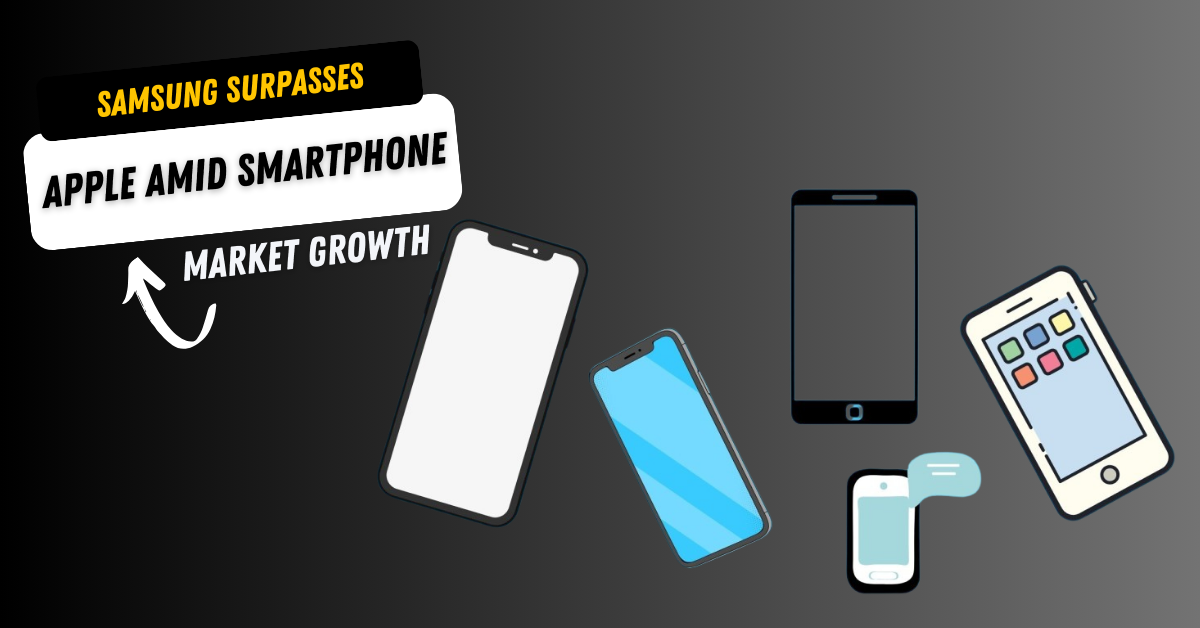The latest report from Canalys reveals some interesting shifts in the smartphone market for Q3, and I couldn’t wait to dive into the details. Samsung has managed to edge past Apple in market share, a feat that speaks volumes about the strategies and innovations driving this industry. Today, I’ll explore what contributed to this shift, why Samsung’s approach succeeded, and the broader trends affecting the smartphone market. I’ll also look at where brands like Xiaomi, OPPO, and vivo stand and what this could mean for the future.

Key Findings in Q3 Smartphone Market Growth
Let’s start with the Canalys report’s top-level findings on market growth. The smartphone industry saw positive growth in Q3, with emerging markets and mass-market demand driving this expansion.
Market Growth Drivers
- Emerging Markets: Expanding smartphone penetration in regions like Southeast Asia, Africa, and Latin America played a key role in this growth. New buyers in these areas tend to look for reliable, budget-friendly models.
- Mass-Market Demand: Demand for smartphones in the mid-range and budget-friendly price segments remained strong, especially as economic factors push consumers to be more price-conscious.
| Company | Q3 2024 Shipments (in million) | Q3 2024 Market share | Q3 2023 Shipments (in million) | Q3 2023 Market share | Yearly change |
| Samsung | 57.5 | 19% | 58.6 | 20% | -2% |
| Apple | 54.5 | 18% | 50.0 | 17% | +9% |
| Xiaomi | 42.8 | 14% | 41.5 | 14% | +3% |
| Oppo | 28.6 | 9% | 26.4 | 9% | +8% |
| vivo | 27.2 | 9% | 22.0 | 7% | +24% |
| Others | 99.4 | 32% | 95.9 | 33% | +4% |
| Total | 309.9 | 100% | 294.6 | 100% | 5% |
Innovation Trends Shaping Growth
The report also highlighted a few significant trends shaping the market:
- Foldable Devices: Samsung continues to lead the pack in foldable devices, a technology that many consumers find exciting. Foldables tap into a unique segment of tech enthusiasts willing to spend for innovation.
- GenAI and Software Upgrades: Both Samsung and Apple have made strides in artificial intelligence (AI) and software enhancements, appealing to users looking for seamless, powerful experiences.
- Samsung Surpassing Apple: Key Insights
I noticed that Samsung’s rise over Apple wasn’t just a matter of volume but strategy. Here’s what I found about how Samsung captured a larger share.
Competitive Market Share
Samsung’s ability to edge out Apple in Q3 boiled down to a few key factors:
- Diversified Product Range: Samsung caters to both budget and premium users, allowing them to capture a wider segment of the market.
- Successful Flagships: The Galaxy S and Z series—especially foldables—are popular among those willing to pay a premium for top-tier technology.

Strategic Advantages Samsung Holds Over Apple
I can’t overlook some strategic moves that made Samsung stand out:
- Pricing Flexibility: Samsung’s competitive pricing, especially in budget markets, makes it accessible to a broader range of buyers.
- Innovation in Foldables: Samsung is still a step ahead with its foldable devices, which resonates with tech-forward buyers and keeps them loyal to the brand.
- Targeted Marketing in Emerging Markets: By aggressively promoting budget-friendly models in emerging regions, Samsung captured new users Apple often misses.
- Market Dynamics: Vendor Analysis
Now, it’s essential to see where other major vendors stand, like Xiaomi, OPPO, and vivo, as these brands are playing a larger role in market competition.

Performance of Other Major Vendors
- Xiaomi: Known for budget-friendly phones with high specs, Xiaomi is expanding quickly, particularly in Asia and Europe.
- OPPO and vivo: Both brands are gaining traction in emerging markets with affordable and feature-rich options, keeping them competitive with Samsung and Apple.
Vendor Competition and Product Upgrades
In the fight for market share, brands are investing in product upgrades and premium strategies:
- Upgrades and Flagship Features: Each vendor is focusing on offering competitive upgrades and flagship devices that showcase the latest technology.
- Budget Models with Premium Features: Mid-range and budget models are increasingly offering features like high-quality cameras and fast charging, making them attractive to cost-conscious buyers.
Trends in Customer Demand and Technology Innovation
Customer demand is evolving, and I found that this has a lot to do with the rise in premium and foldable devices. Here’s why this matters.
Rise in Demand for Premium and Foldable Devices
Consumers are showing increased interest in premium devices with advanced features:
- Foldable Devices: Foldables represent a unique sector where Samsung leads, attracting a niche market of tech enthusiasts.
- Premium Features in Mid-Range Models: Both Samsung and Apple have worked on enhancing mid-range options with features like AI capabilities, advanced cameras, and top-notch displays, which draws in high-end buyers.
Customer Segmentation and End-User Types
Canalys data provides insights into how different user types affect market segmentation:
- High-End Buyers: This group favors premium devices, often from Samsung and Apple, due to brand loyalty and a desire for top-tier features.
- Price-Sensitive Consumers: In emerging markets, consumers often look for affordable models with decent specs, which brands like Xiaomi and OPPO are capitalizing on.
Conclusion and Market Outlook for Future Quarters
Reflecting on these insights, I think the competition between Samsung and Apple—and the role of emerging brands—is only heating up. Let’s look at what we might expect in Q4 and beyond.
Canalys Insights on Future Growth
Canalys projects that market demand will remain strong, with a continued focus on innovation and consumer needs:
- Focus on Emerging Markets: I expect brands will increasingly target these regions, especially as they look to gain new users.
- Technological Advancements: Foldable devices, GenAI, and software enhancements will continue to drive competition and keep consumers interested.
Expert Predictions for Q4 and Beyond
As we head into Q4, these are the trends to watch:
- Strategic Pricing and Product Offerings: Samsung’s pricing flexibility may give it an edge, but Apple’s loyal customer base remains strong.
- Innovative Flagships: Each brand’s approach to innovation, whether through foldables or AI integration, will be crucial in determining their position in the market.
FAQs
Q1: What factors contributed to Samsung’s Q3 market share increase over Apple?
Samsung’s broader product range, competitive pricing, and focus on emerging markets played key roles, along with their leadership in foldable devices.
Q2: Why are foldable devices significant in this market report?
Emerging markets, including Southeast Asia, Africa, and Latin America, were significant growth drivers, as smartphone penetration continues to rise in these areas.
Q3: Which markets saw the most growth in Q3, according to Canalys?
Emerging markets, including Southeast Asia, Africa, and Latin America, were significant growth drivers, as smartphone penetration continues to rise in these areas.
Q4: How are Xiaomi, OPPO, and vivo positioned in this competitive landscape?
These brands focus on affordable models with premium features, helping them gain traction in emerging markets where price-sensitive consumers dominate.
Q5: What should we expect in Q4 for the smartphone market?
Continued competition, with a focus on innovation in foldables, AI integration, and targeted pricing strategies in emerging markets.
















